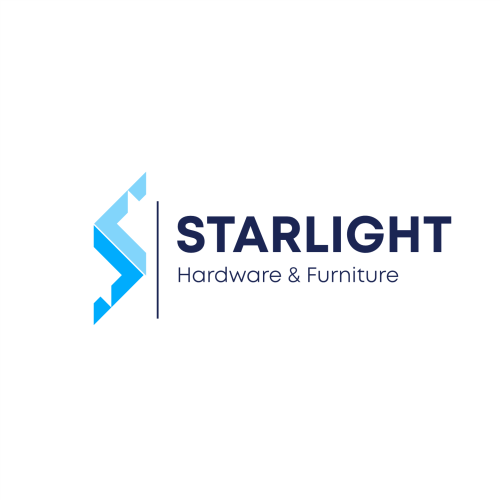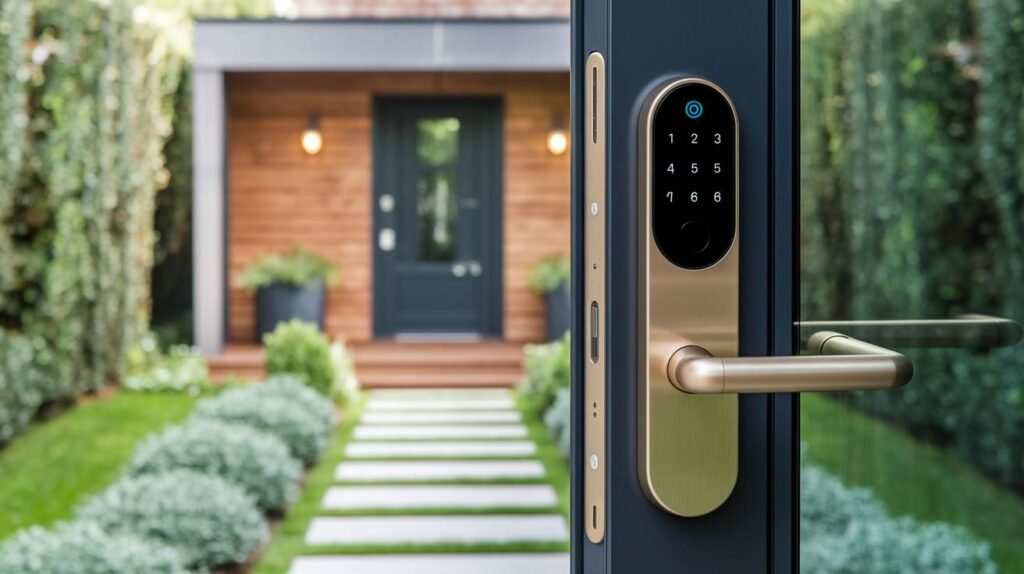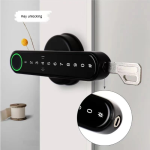Ever had that sinking feeling when you misplace your house key? You wonder if someone could just stroll in. It’s a small panic that hits you right in the chest.
That’s why a smart door lock feels like magic! You can punch in a PIN code, press your finger on a biometric fingerprint sensor (a reader that checks your unique fingertip pattern), or tap your smartphone app, even from your beach chair across town. Picture the smooth metal faceplate and a soft LED glow lighting up your keypad. Security and style, all in one.
Alright, let’s dive in. We’ll look at six top smart locks that amp up safety and add a touch of design flair. By the end, you’ll spot the perfect lock for your home and genuine peace of mind.
Smart Door Locks Overview: Features, Benefits, and Buyer Considerations
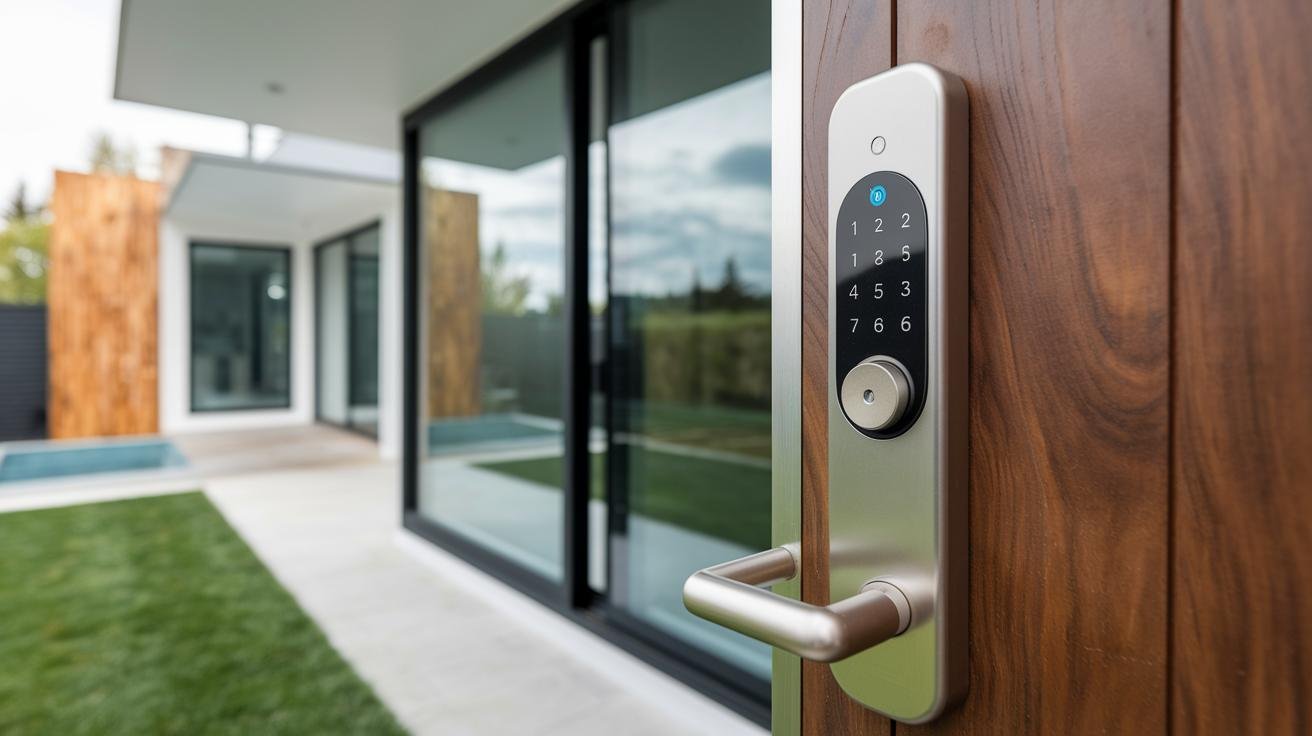
Smart door locks let you ditch keys. They open with PIN codes, biometric fingerprint sensor (a reader that checks your unique fingertip pattern), digital passes like Apple Home Key, or your smartphone app over Bluetooth or Wi-Fi. Picture the smooth metal faceplate and a soft LED glow guiding your finger to the keypad.
They swap right in place of your old deadbolt or lever. Installation’s as simple as remove and replace, no extra drilling or wiring. Solid.
Once it’s set up, you can schedule temporary codes for friends, family, or service people. Never worry about a guest getting locked out, or a key sitting under the mat.
Lock or unlock your door from the couch or across town with a quick app tap. Want to feel extra safe? You’ll get real-time alerts whenever someone comes or goes.
These locks keep activity logs so you can see who entered and when. They blend with modern decor in touchscreen, keypad, or biometric styles. Some even send a tamper alert if someone forces the lock or punches in the wrong code too many times.
Over 10,000 locks installed worldwide.
Here’s what to weigh when you shop:
- Ecosystem integration: Amazon Alexa, Google Home, or Apple HomeKit
- Entry methods: PIN codes, app control, fingerprint scan (touch sensor), or NFC passes (short-range digital keys)
- Hardware style: full deadbolt replacement, retrofit adapter, or lever-handle swap
- Certification: ANSI/BHMA Grade 1 (highest strength) or Grade 2 for heavy use
- Connection: built-in Wi-Fi or hub-based setup for remote control
Back to your search, pick what fits your home, and enjoy that reassuring click every time.
Types of Smart Door Locks: Deadbolts, Adapters, and Handle Replacements
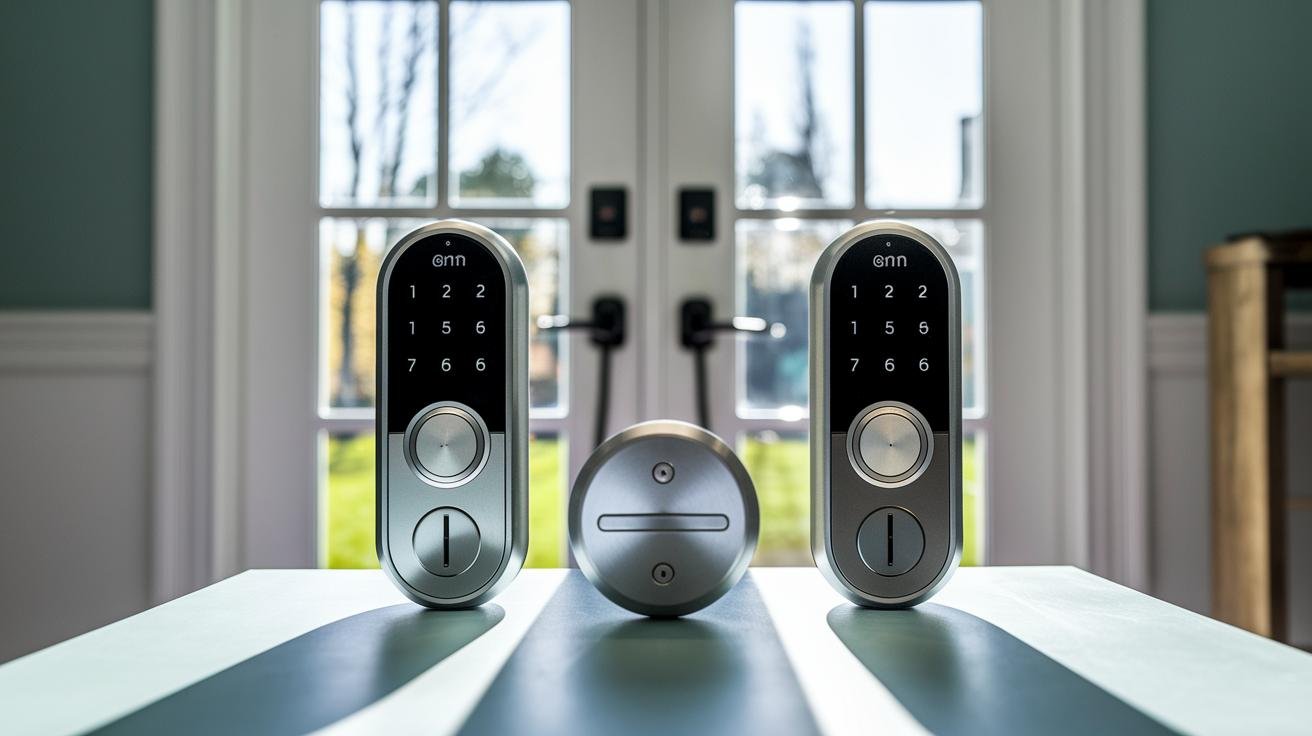
Smart locks come in three forms. You can replace the whole deadbolt, bolt on a retrofit adapter to your thumb turn, or swap out the doorknob or lever. Easy. Each style fits a different need and skill level.
Full Deadbolt Replacements
These swap your entire lock for a motorized unit with built-in Wi-Fi and Bluetooth. You’ll notice a smooth metal faceplate with a soft LED glow and a snug interior battery pack. Setup takes about 20 minutes with a screwdriver (and a drill if your holes are nonstandard). It costs more up front, but you get integrated electronics and remote access without any extra hub.
Deadbolt Adapters for Retrofit
Think of a retrofit adapter (a motorized cover for your thumb turn) clipping onto your existing lock. The outside keyhole stays just as it was. You’ll need under 15 minutes and a Phillips screwdriver – no drilling required. Ideal for renters or vacation homes since you can remove it before you move.
Doorknob and Lever Replacements
When you don’t have a separate deadbolt, swapping in a smart doorknob or lever adds motorized locking inside the handle. The mechanism hides behind a curved lever or rounded knob, blending with classic hardware. You’ll hear a reassuring click when it locks. Choose this if your door uses a mortise lock (where the lock fits inside the door) or you can’t fit a deadbolt.
Keyless Entry Methods in Smart Door Locks
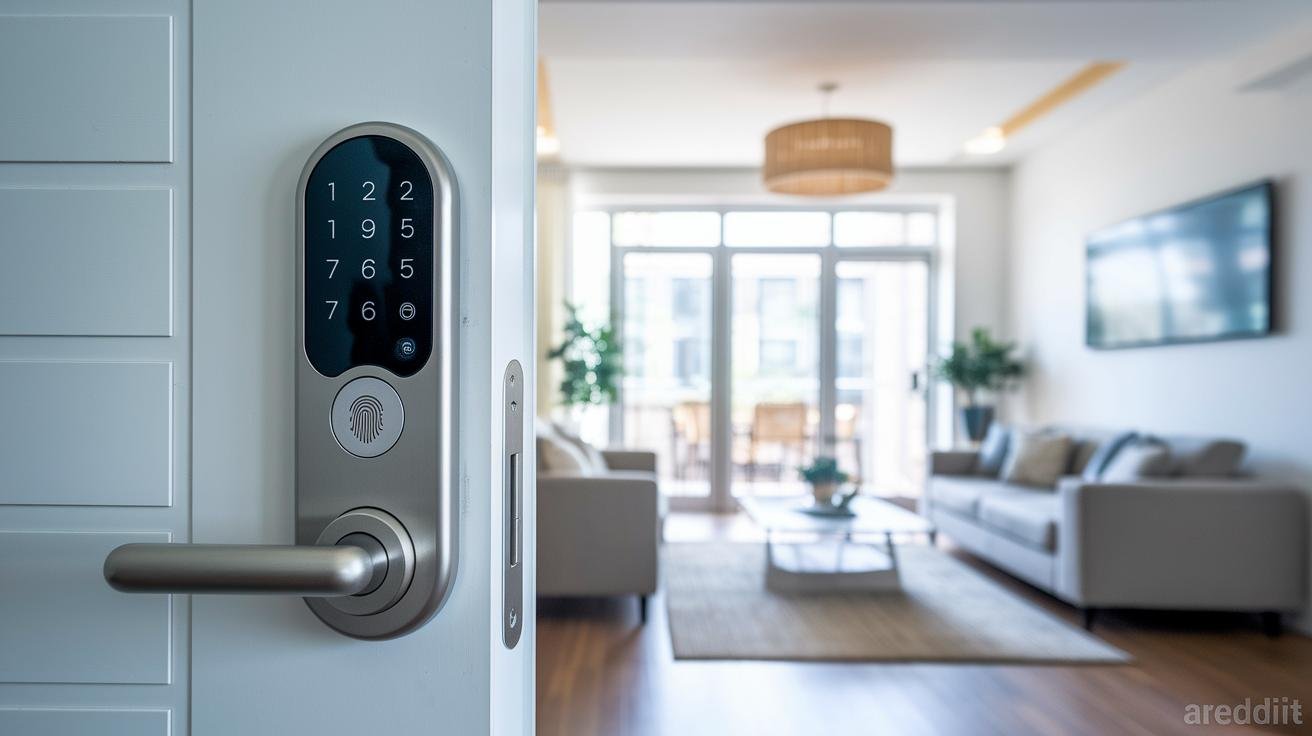
Smart locks let you choose how to get inside without a key. Each option brings its own speed, ease, and power needs. Some run on batteries, others tap into your home network. Let’s break them down.
- Numeric PIN codes on a touchscreen or physical keypad. The crisp feel of each press and a soft LED glow makes it easy. It’s fast and you don’t need to carry anything. But a weak code can be guessed and someone might peek over your shoulder.
- App-controlled unlocking over Bluetooth (short-range wireless) or Wi-Fi (home network). Think of pairing like connecting your headphones to your phone. You can lock or unlock from anywhere. But it needs a reliable network or a hub for remote access.
- Fingerprint scanners (biometric fingerprint sensor (a reader that checks your unique fingertip pattern)). Rest your finger on the smooth metal faceplate and hear a reassuring click. You get near-instant entry. Dirty or wet fingers may not register.
- Facial recognition (biometric face scanner). Just look at the tiny camera and the door clicks open. It feels a bit like magic. In low light or after a major haircut it can miss you.
- NFC passes like Apple Home Key. Tap your phone or card on the metal plate, just like at a hotel. No app to hunt for. But it only works with devices or cards set up for the pass.
- Contactless keycards or fobs. Wave a card or fob near the reader and step right in. Guests and staff love how simple it is. But cards can be lost or even cloned if not stored securely.
Mixing two or more options gives you a safety net. If your phone battery dies, just punch in your PIN. And if you forget your code, you can still tap a fob.
Smart Lock Security Protocols and Tamper Detection
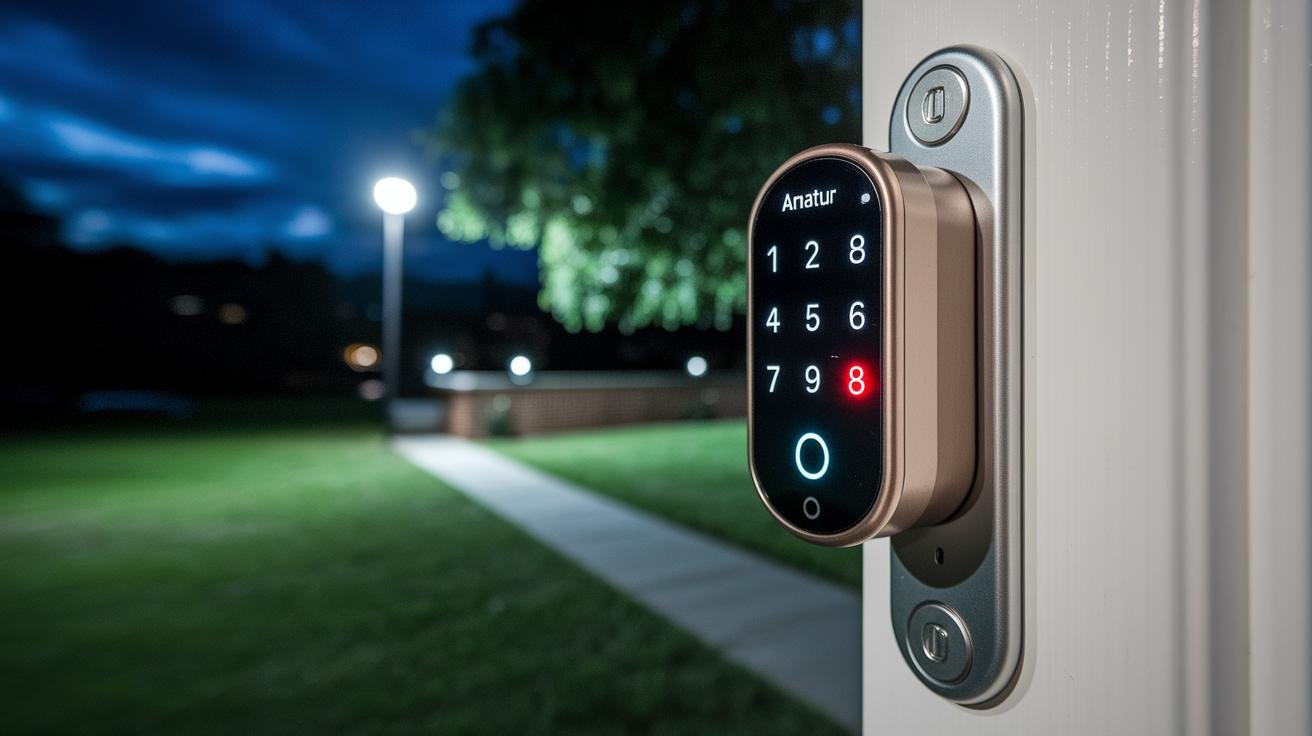
Our smart locks use AES 128-bit or 256-bit encryption (a method that turns wireless commands into unreadable code). That means if someone sniffs your home Wi-Fi or Bluetooth signal, they’ll just see gibberish instead of your unlock code.
Many of our locks also include two-factor authentication (2FA). You’ll need both your app login and a biometric fingerprint sensor (a reader that checks your unique fingertip pattern) or a PIN. You’ll see a soft LED glow while the scan runs – and then you’ll hear that reassuring click unlocking the door. Game-changer!
Solid.
Physical strength follows ANSI certification (tests by the American National Standards Institute). Grade 1 hardware handles heavy traffic and forced-entry tests – ideal for commercial use.
Grade 2 sits just below and offers strong resistance for most homes. Grade 3 is the basic level. It’s tougher than a plain deadbolt but best suited for interior doors or low-traffic areas.
Built-in tamper detection keeps you in the loop. If someone pounds on the door or enters the wrong PIN too many times, the lock sets off an alarm. Some models even send a push notification to your phone when the cool metal faceplate senses a forced entry attempt. That audible siren and instant alert give you time to check on things or call for help.
Integration and Compatibility of Smart Door Locks with Smart Homes
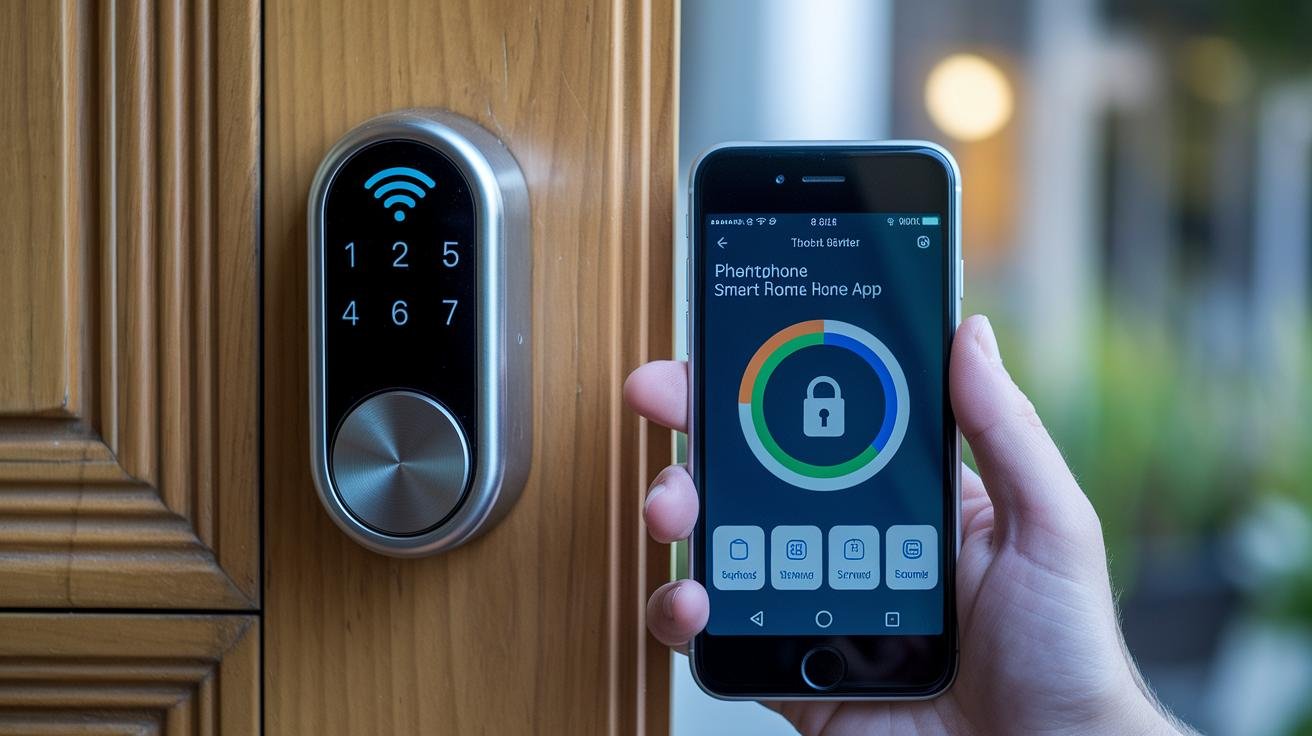
Most smart locks play well with big-name systems like Amazon Alexa, Google Assistant, and Apple HomeKit. They slide right into your existing setup. Solid.
Locking or unlocking is as easy as tapping an app icon or saying “Hey Google, lock the front door.” You’ll see a soft LED glow and hear a reassuring click. They’re CE certified (that means they meet strict safety standards) and built on two decades of expertise.
But some models need a little sidekick. Brands like Ultraloq and August include a small hub you plug into your router. That hub brings your lock onto Wi-Fi. Step away from Bluetooth range and you still get remote control and cloud alerts. Skip the hub and you keep local Bluetooth access, like standing next to the lock, but lose notifications when you’re out and about.
And then there’s Matter. Think of it like a universal adapter for smart homes. It lets different brands speak the same language. Level Lock and Lockly already work as Matter locks in mixed setups. As more devices join in, you can swap brands without any headaches. Your system stays flexible when new smart-home gear hits the market.
Installation Options and Cost Factors for Smart Door Locks
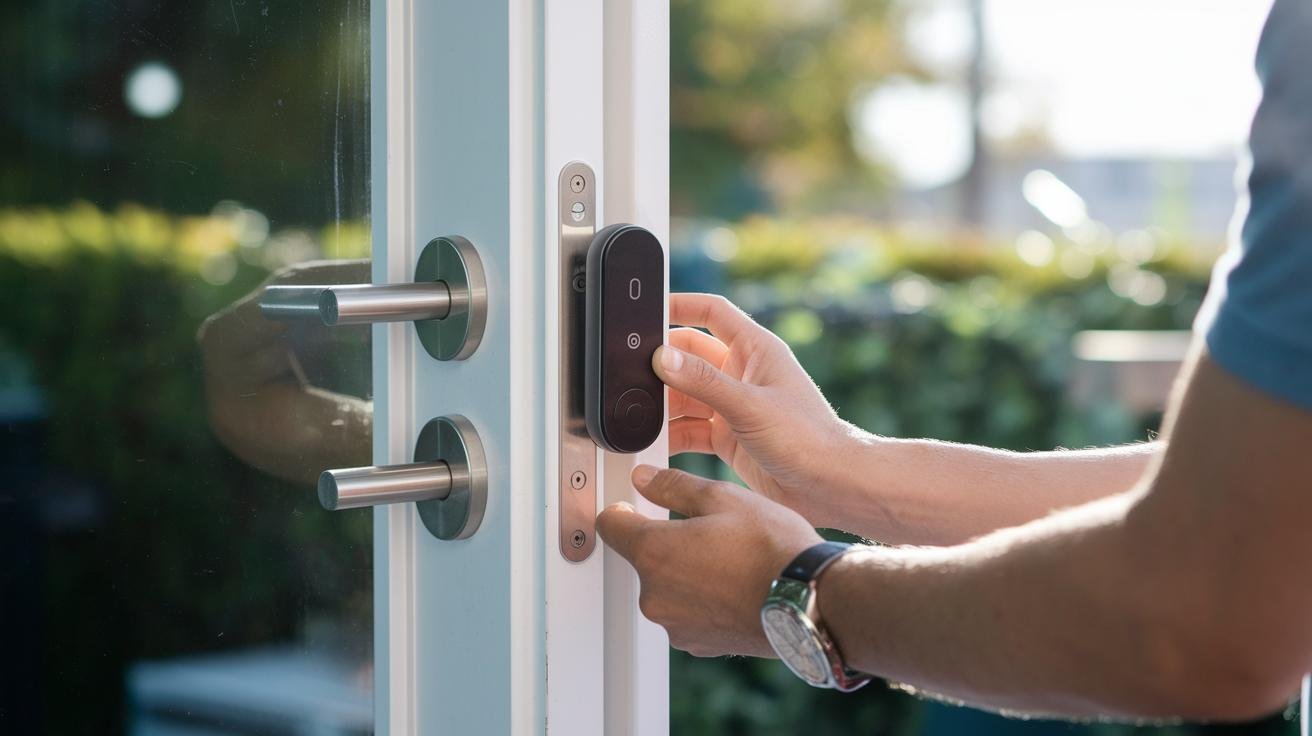
Installing a smart lock can feel like a quick weekend project. You just need a Phillips screwdriver. In many cases, you can swap a deadbolt in about 10 to 25 minutes (um, a drill helps if your door holes aren’t standard size). You’ll hear a reassuring click as the bolt slides home.
Or go for a retrofit adapter. It clips onto your existing thumb turn in under 15 minutes, no drilling or wiring needed. Solid.
These smooth installs keep your costs low. But if your door prep is off or you have a mortise lock (an old-style lock set into the door’s edge), you might hit a snag. A pro can save you time and headaches.
DIY Installation Steps
- Remove your old deadbolt or lever with a Phillips screwdriver.
- Fit the new lock’s mounting plate against the door and mark where the screws go.
- Drill small pilot holes for guides, then fasten the plate using the screws included.
- Attach the exterior and interior lock modules, snap on the covers, and insert the batteries.
- Open the companion app, follow the on-screen prompts to set motor strength (how firmly it turns the bolt), add user codes, and test lock and unlock.
Professional Installation
If you’re working with a mortise lock (an old-style lock set into the door’s edge), a misaligned frame, or nonstandard prep, calling a pro makes sense. Licensed installers usually charge $50 to $150, depending on your area. They’ll handle drilling, shim tweaks (thin metal pieces that level your lock), and any permit steps your local building code needs. For rental units or commercial sites under strict rules, a certified installer ensures a perfect fit and peace of mind.
Comparing Top Smart Door Lock Brands and Models

Major smart lock companies like Schlage, Yale, August, Ultraloq, Level, and Eufy each bring something special to your front door. Whether you’re adding a sleek metal faceplate to a family home or setting up smart locks for Airbnb hosts, you’ll find the right blend of style, tech, and reliability here.
And if you want a quick overview of models, entry methods, platform support, price points, and standout features, check out the chart below.
| Model | Type | Entry Methods | Smart Home Platforms | Price Range | Stand-out Feature |
|---|---|---|---|---|---|
| Yale Assure 2 | Deadbolt replacement | Keypad (numeric keypad (buttons to enter a code)), physical keyway (traditional key slot) | Apple HomeKit, Alexa, Google | $200–$250 | ANSI Grade 2 (residential security rating), keyway backup |
| Ultraloq U100 | Deadbolt replacement | Fingerprint (biometric fingerprint sensor (a reader that checks your unique fingertip pattern)), keypad (numeric keypad) | Alexa, Google | Under $150 | IP65 weather resistance |
| August Smart Lock | Retrofit adapter | App control, guest codes | Alexa, Google | $150–$180 | DoorSense notifications |
| Schlage Encode Smart Wi-Fi | Deadbolt replacement | Keypad (numeric keypad), app control | Alexa, Google | $170–$200 | ANSI Grade 1 (highest residential security rating), built-in Wi-Fi |
| Level Lock | Deadbolt replacement | Apple Home Key, app control | Apple HomeKit, Matter | $300–$350 | Minimalist design, no keypad |
| Eufy Video Smart Lock | Deadbolt replacement | Fingerprint (biometric fingerprint sensor), keypad (numeric keypad), camera (built-in camera (records video)) | Alexa, Google | $300–$350 | 2K camera (2K resolution), local video storage |
Starlight Smart Locks set a new standard in reliability. Crafted in China by Starlight Hardware, each lock features a soft LED glow and a reassuring click every time you lock or unlock. They’re CE certified (meets European safety standards), offer multiple ways in, and slide into place with no fuss.
We built these locks so you can focus on what matters, peace of mind and a stylish entrance. Solid. Smart. Starlight.
Pricing Tiers and Value Analysis of Smart Door Locks

Budget locks under $100 keep things simple. You punch in a code or tap your phone near the smooth metal faceplate for a reassuring click. They run on standard batteries and control a single deadbolt. No remote alerts or fancy sensors here, so they’re great for renters or first-time buyers on a tight budget.
Mid-range models in the $100 to $200 range step it up with a biometric fingerprint sensor (a reader that checks your unique fingertip pattern), a built-in Wi-Fi hub, and voice-assistant support. With the app you can lock or unlock from anywhere, set up multiple user codes, and get tamper alerts. They even work with Amazon Alexa or Google Assistant to lock the door by voice. Solid, smart, and affordable.
Premium locks priced from $200 to $350 and up bring pro-level security with 2K video, facial recognition (a reader that maps your face), or palm biometrics. They support Matter (a smart home standard that ties devices together) and sit inside a solid-core metal body with CE certification for reliability. Many include extended warranties and guest management tools like temporary codes. You get high-end peace of mind.
Now match your must-have features to your budget and lifestyle. That way you’ll find the right smart lock for your home.
Maintenance, Troubleshooting, and Battery Life of Smart Door Locks
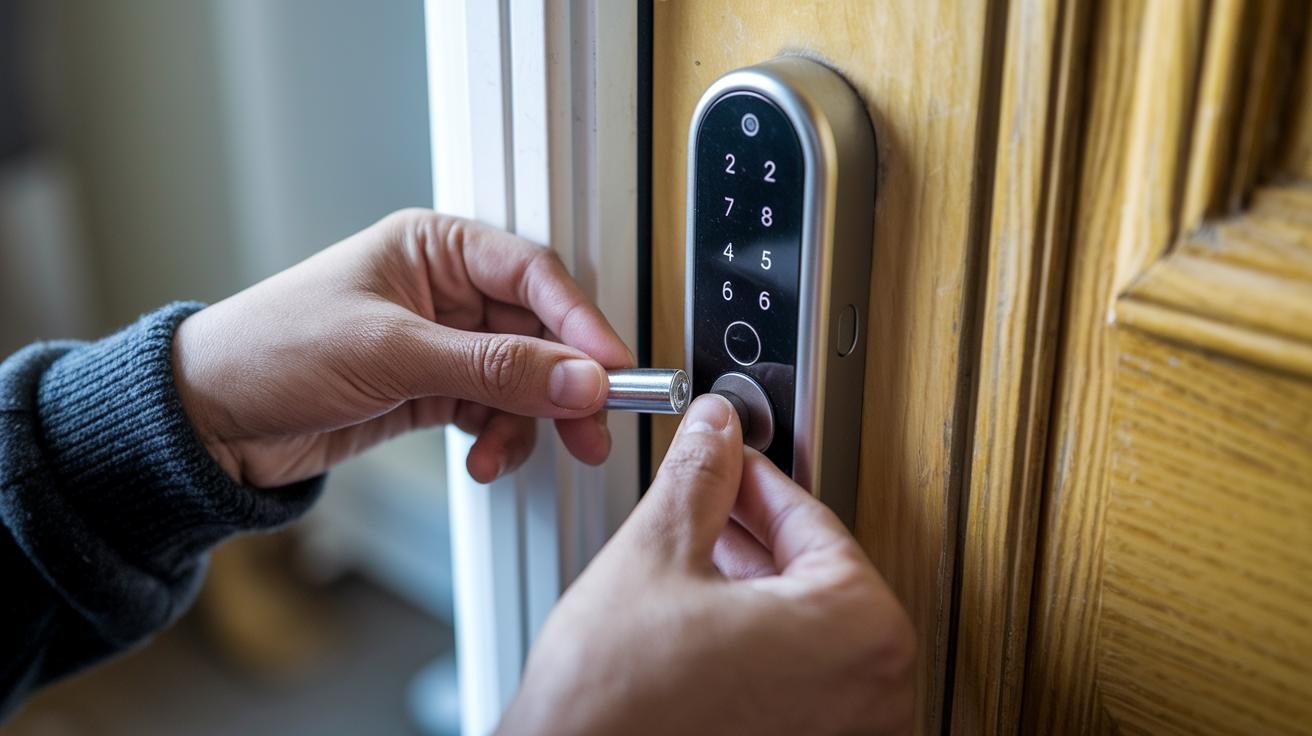
Most smart locks run on AA batteries that last about three to six months. Heavy use or a spotty Wi-Fi signal can shave that time down. So get in the habit of checking your battery status in our app once a month. You’ll see a low-battery alert before the LED goes dim or the motor starts to slow. Want to know a secret? Checking battery health monthly can save you a lock-out panic.
When it’s time to swap batteries, grab fresh alkaline AA cells. Then, once you’re back on Bluetooth or Wi-Fi, tap Update Firmware (think of it like giving your lock a quick tune-up). Firmware updates keep the motor humming smoothly and your encryption locked tight. Just remember, some brands take a bit longer to download their patches.
Um, start with the basics if your lock loses connectivity, jams, or the keypad misreads. First, move your Wi-Fi hub closer or switch to the other router band. Next, wipe the metal faceplate and sensor window with a dry cloth, like clearing fog off a mirror. Then open your app, force-quit, and relaunch to refresh the link. You can also pull out the batteries for a quick motor reboot.
Back to our troubleshooting, try re-pairing via Bluetooth. Rerun the setup wizard (it’s like a guided tour for your lock) and test lock and unlock until you hear that crisp, reassuring click again.
Quick fixes for common error codes:
- Check the battery level in the app and swap in new AAs if it’s under 20%.
- Restart your Wi-Fi hub or router to get remote access back.
- Clean the faceplate and sensor window to avoid misreads.
- Update firmware over Bluetooth or Wi-Fi to patch glitches.
- Power-cycle the lock: remove all batteries for 30 seconds, then pop them back in.
Um, this usually does the trick.
Final Words
In the action, we covered everything from the core features of smart door locks and the types that fit different doors to the entry methods that suit any lifestyle. We drilled into security layers, integration tips for home systems, and practical install costs whether you DIY or call a pro.
We stepped through top models, price tiers, and upkeep advice so you know what to expect in budget, mid, or premium picks. That way you can match features like fingerprint access or Wi-Fi with your long-term needs.
With smart door locks at your side, you’re set for seamless entry, fewer lock headaches, and stronger peace of mind. Enjoy the next chapter of hassle-free security!
